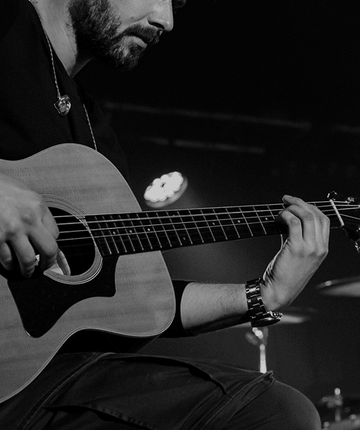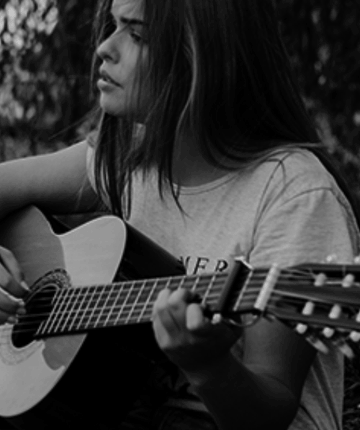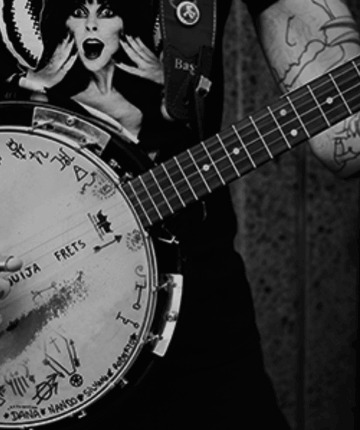Ukulele Strings - Beginners Buyers Guide

Welcome, if you've reached us here on this page, chances are you are searching a new set of ukulele strings but not sure what set to go for?
Choosing a suitable set of strings for your instrument can be rather baffling at times, but fear not, you've come to the right place. In little to no time, you will be able to select a set of strings that is just right for your ukulele.
First Thing’s First
The first thing to ascertain is the size of your ukulele.
Ukuleles are categorised into 4 main groups graduating up in size from soprano, concert, tenor and the largest is a baritone ukulele.
As a result ukuleles ideally need strings tailored to their specific length.
Below is a diagram showing you the different lengths of ukuleles available.
Here’s how to measure your ukulele;
- Grab a tape measure
- Measure the distance between the saddle and the nut.
The saddle is the white piece of material where your strings sit right before they are tied on down at the bridge (the end where you strum or pick)
The nut is the smaller piece of white plastic/bone material between the headstock and the very top of your fretboard... down where you play your chords.
Once you have your measurement, cross reference that with the table below to see what size ukulele you have. If your ukulele doesn't measure exactly as per the measurements listed in the table below, select the closest size to your particular instrument.


Now you know what size your ukulele is, let's get you a set of strings!
Soprano Ukulele
Soprano ukuleles are considered by some as the ‘original’ sized ukulele.
These ukes are typically tuned to G-C-E-A where the G string is tuned higher in pitch in place of what is typically the lowest tuned string. This is known as reentrant tuning and is what gives the soprano ukulele its signature sound.
If you need a set tuned one step higher to A-D-F#-B we have also made an additional recommendation for you.
We’ve suggested some sets below that we wholeheartedly recommend for their quality and consistency. Despite the difference in price, whichever set you wish to buy, you’ll have a good quality set that will sound great and serve you well.
These soprano ukulele sets consist of 4 plain nylon strings.
There are three different price points here
Best Value for Money
Top Seller
A-D-F#-B Tuning Set
Concert Ukulele
Slightly larger in size than the soprano ukulele is the concert ukulele.
Concert ukuleles are one of the most popular sized ukuleles, often favoured for its longer scale length coupled with its larger body help to deliver slightly more volume and bolder sound when compared to soprano ukes.
Concert ukulele sets contain four plain nylon strings tuned to G-C-E-A where the G string is tuned higher in pitch in place of what is typically the lowest tuned string.
Below are a selection of sets that we have chosen to recommend. These sets are made by reputable brands that are high on quality but won’t necessarily break the bank. You cannot go too far wrong with whatever set you choose to go for here. They’ll sound and feel great and serve you and your instrument well.
These concert ukulele sets consist of 4 plain nylon strings and need to be tied on at the bridge in the traditional fashion.
Best Value
Best Seller
Ball End Set
The sets suggested above all need to be tied on at the bridge in the traditional fashion. If you don’t feel comfortable with tying on the strings at the bridge and would prefer the convenience of your strings being fitted with a ball end (and if your ukulele allows), we’ve suggested a set below that will help make that job a little easier;
Tenor Ukulele
The third largest sized uke is the tenor ukulele. Boasting a longer scale length and larger body size, the tenor ukulele is revered for its bold, deeper tone, not to mention its increased volume. Furthermore, it also adds an extra element of comfort as the larger size means there’s more space for fretting and picking… something the smaller ukuleles lack and some adults find a drawback.
Much like its smaller counterparts, tenor ukuleles also utilise the G-C-E-A tuning as standard. Again, the G string (which is often expected to be the string lowest in pitch) is tuned higher to help maintain the ukuleles traditional sound despite its larger size.
Best Value
Best Seller
Because of the tenor’s larger scale length and inherent deeper tone, it has the benefit of the option of the G string being tuned lower in pitch if you wished (as opposed to it’s usual higher pitch).
Whilst some ukulele traditionalists might feel a low G takes away the ukuleles inherent character, it offers a different harmonic dimension to the instrument which may be appealing to some. Also, if some players are coming from a guitar background, this ‘linear’ tuning will feel a little more familiar.
If you wish to go down that route, Here's a set to try...
Low G Tuning Set
Baritone Ukulele
The largest of the four main types of ukulele is the Baritone ukulele.
Because of its extended scale length and larger overall size, baritone ukuleles differ in several areas when compared to the smaller sized instruments.
Tenor ukuleles are tuned lower in pitch to D-G-B-E where the D string is the lowest tuned string.
They possess a much deeper tone too which is as much to do with the instrument's physical size aswell as its lower tuning.
Again, if you’re new to the ukulele and have come from a guitar background, the tuning of a tenor uke will be very familiar making it feel almost guitar-like.
The Baritone Ukulele's larger size and lower tuning demands not only longer strings but strings with a slightly different composition too. Instead of being all plain nylon, the thicker D and G strings are usually wound whereas the higher pitched B and E strings are made from plain nylon.
Below are a few sets of baritone ukulele strings that we would recommend as a great starting point. Both of these sets are made by reputable brands well known for quality and reliability. You can’t go too far wrong choosing either of these sets.
Best Value
Best Seller
We hope that this article has provided some much needed guidance for you and helped you navigate the ukulele string landscape. If you have some further questions or need any more help, please do not hesitate to get in touch with us where we'd be happy to help out further.


















